Computational study of shape, orientation and dimensional effects on the performance of nanowire fets
Bạn đang xem bản rút gọn của tài liệu. Xem và tải ngay bản đầy đủ của tài liệu tại đây (3.15 MB, 59 trang )
COMPUTATIONAL STUDY OF
SHAPE, ORIENTATION AND
DIMENSIONAL EFFECTS ON
THE PERFORMANCE OF
NANOWIRE FETS
KOONG CHEE SHIN
NATIONAL UNIVERSITY OF
SINGAPORE
2010
COMPUTATIONAL STUDY OF SHAPE,
ORIENTATION AND DIMENSIONAL
EFFECTS ON THE PERFORMANCE OF
NANOWIRE FETS
KOONG CHEE SHIN
(M.ENG, NUS)
A THESIS SUBMITTED
FOR THE DEGREE OF MASTER
ENGINEERING
DEPARTMENT OF ELECTRICAL AND
COMPUTER ENGINEERING
NATIONAL UNIVERSITY SINGAPORE
2010
ACKNOWLEDGEMENTS
I would like to express my sincere and deepest gratitude to my supervisor,
Professor Liang Gengchiau for his generous help throughout my master study at NUS.
Professor Liang impressed me very much by his responsibility and strict attitude in
training students. He always provides timely support and encouragement in difficult
times. He gives me opportunity to advertise my work at important conferences. I
especially thank him for his prompt reading and careful critique of my thesis and
papers. I have enhanced my knowledge in working with him.
I am also indebted to Professor Samudra for his valuable guidance and
insightful suggestions to help me accomplish my research work. He has devoted and
committed his time to help me go through my research work.
i
TABLE OF CONTENTS
ACKNOWLEDGEMENTS ........................................................................................ i
TABLE OF CONTENTS...........................................................................................ii
LIST OF TABLES ...................................................................................................iii
LIST OF FIGURES .................................................................................................. iv
ABSTRACT............................................................................................................. vi
1. INTRODUCTION ................................................................................................. 1
1.1
1.2
1.3
Overview of Semiconductor Development and Simulation...........................................1
Limitations and the Effects of Device Scaling ......................................................................5
Overview of thesis........................................................................................................................ 11
2. LITERATURE REVIEW AND THEORY........................................................... 13
2.1 Overview............................................................................................................................................... 13
2.2 Literature Review ............................................................................................................................. 13
2.3 Tight-binding (TB) Model.............................................................................................................. 14
2.3.1 Review of bra-ket Notation.................................................................................................. 15
2.3.2 Introduction to TB Model of Electronic Structures.................................................... 16
2.3.3 Parametrization........................................................................................................................ 19
2.4 Semiclassical Top-of-barrier Ballistic Transport................................................................. 22
2.4.1 Semiclassical Ballistic Transport ....................................................................................... 22
2.4.2 Top-of-barrier Explanation.................................................................................................. 23
2.5 Combining Tight-binding and Top-of-barrier Model for Simulation........................... 24
2.5.1 Derivation of electron density equation......................................................................... 24
2.5.2 Derivation of net current equation................................................................................... 25
3. SIMULATION RESULTS AND DISCUSSIONS (I): Effects of Channel Materials
and Channel Orientation on Device Performance..................................................... 27
4. SIMULATION RESULTS AND DISCUSSIONS (II): Shape Effects on Device
Performance ............................................................................................................ 35
5.
CONCLUSION & FUTURE WORKS.............................................................. 45
5.1 Conclusion ....................................................................................................................................... 45
5.2 Future Works ................................................................................................................................ 47
5.2.1 Structural Changes .............................................................................................................. 47
5.2.2 Challenges Ahead ................................................................................................................. 48
BIBLIOGRAPHY ................................................................................................... 50
ii
LIST OF TABLES
Table
1 Summary of best performance Orientation for different channel
cross-section and NW sizes in terms of the highest On-state current.
Shaded cells represent best performance for each size. For n-type
device, [110] orientation gives the best performance while for p-type
devices, best channel orientation depends on nanowire size and
cross-sectional shape. CW, RW and TW represent circular
nanowire, rectangular nanowire and triangular nanowire,
respectively…………….……………………………………………..
Page
36
iii
LIST OF FIGURES
Figure
Page
1 A schematic of the simulated NW FETs with different channel crosssection, namely circular, square and equilateral triangle………………
5
2 Load capacitor discharge by output current in a bulk planar MOSFET
circuit………………………………………………………………………………...
5
3 Conduction and valence band bandstructure for (a) 3 nm Si with [110]
orientation and (b) 3 nm Ge with [110] orientation……………………
22
4 Schematic of a ballistic device with two contacts served as reservoirs
connected by a ballistic channel……………………….........................
23
5 E-k relationship at top-of-barrier for (a) Vds=0, (b) small Vds and (c)
large Vds which lowers the Fermi level at drain side compared to
Source. ε1 (x) is the conduction band profile along the x-axis. The
positive x is defined from top of barrier to drain.……………………..
24
(a) and (b) show the I-V characteristics for 3 nm n-type and p-type Si
6 and Ge , respectively while (c) and (d) respectively show the I /I
on off
ratio for n-type and p-type devices, respectively. In general for n-type
devices, Si and Ge with [110] orientation give highest On-state
current while p-type devices, [110] Si and [111] Ge give highest Onstate current. This is due to these orientations having lightest effective
mass……………………………………................................................
28
(a) and (b) show the current density as a function of nanowire size for
7 n-type and p-type Si and Ge with EOT=1.6 nm while (c) and (d) show
the current density as a function of nanowire size for n-type and ptype Si and Ge with EOT=0.5 nm. In general, the current density with
EOT of 0.5 nm is twice larger than that of 1.6 nm due to better gate
control………………………………………………………………….
30
Cg/Cox as a function of nanowire diameter for n-type and p-type Si
8 and Ge with EOT of 1.6 nm (8a and 8b) and EOT of 0.5 nm (8c and
8d). The capacitance value is degraded from the gate oxide
capacitance for both Si and Ge regardless of oxide thickness…………
32
(a) and (b) show the transconductance for Si and Ge with EOT of 1.6
9 nm while (c) and (d) show the transconductance for Si and Ge with
EOT of 0.5 nm. In general, for n-type devices, [110] orientation has
highest transconductance regardless of channel material and diameter
size while for p-type devices, [110] Si and [111] Ge give highest
transconductance……………….............................................................
34
iv
10 (a) Energy bandgap (Eg) for Si and Ge in [110] orientation with
different channel cross-sectional shapes. The symbols represent the
NW cross-sectional shapes. Triangular shape NWs for both cases
show the largest change in Eg. (b) The insulator capacitance of NW
with different sizes. Solid lines represent EOT of 1.6 nm while dotted
lines represent aggressively scaled EOT of 0.5 nm. In both cases,
square cross-section has the largest capacitance………………….........
36
11 Ids-Vds characteristics for 3 nm Si and Ge NW FETs with EOT of 1.6
nm ( a) and b), respectively) for best orientation of different channel
cross-section. c) and d) represent similar plots for EOT of 0.5 nm. In
general, square cross-section NW FETs provide best On-state current
performance for pFET and nFET due to having larger
capacitance. The Off-state current is set to 0.2µA/µm…...................
38
12 On-state current for best orientation with different channel crosssectional shapes for EOT=1.6 nm (12a) and 12b)) and Current density
for different cross-sectional shapes for EOT=1.6 nm (Fig. 12c and
12d). Red points represent Ge while blue points represent Si…………
39
13
Cg / Cox ratio as a function of nanowire diameter for n-type and ptype Si and Ge with oxide thickness of 1.6 nm (13a and 13b) and
oxide thickness of 0.5 nm (13c and 13d). The capacitance value
degrades from the gate oxide capacitance for both Si and Ge
regardless of oxide thickness and for p-type Ge, Cg / Cox ratio is
almost independent of NW size and cross-sectional shapes…………...
40
14 a) and b) show the transconductance for Si and Ge with EOT of 1.6
nm while c) and d) show the transconductance for Si and Ge with
EOT of 0.5 nm. In all the cases, transconductance is a function of
NW size and as NW area decreases, the transconductance
decreases……………………………………….....................................
42
15 Device intrinsic delay for best performance orientations based on the
highest On-state currents as shown in Table 1 with different channel
cross-sectional shapes and materials for EOT=1.6 nm (Fig. 15a and
15b) and EOT=0.5 nm (Fig. 15c and 15d). Ge has the smaller device
intrinsic delay as compared to Si due to its effective mass being
smaller than Si……………………………………………………...….
43
v
ABSTRACT
In this research work, we evaluate the shape and size effects of Si and Ge
nanowire (NW) field-effect-transistors (FETs) on device performance using sp3d5s*
tight-binding (TB) model and semi-classical top-of-barrier ballistic transport model.
This work is mainly divided into two parts: (a) to explore effect of orientation,
focusing on circular NW, on FETs ultimate performance and (b) to investigate the
effects of NW shapes on NW FETs ultimate performance. Firstly, we conclude that
for n-type devices, [110] orientation gives highest On-state current compared to other
orientations, regardless of channel material under study. We also observe that valley
splitting is a strong function of quantum confinement, which is more significant for
NW diameter smaller than 5 nm. In investigating the effects of gate capacitance on
devices of different NW sizes, we conclude that gate capacitance degrades as the
device shrinks into sub-nanometer regime. Secondly, our simulation results show that
smaller cross-sectional area is desirable for high frequency device applications and for
larger On-state currents, square cross-section may be desirable due to larger crosssectional area and insulator capacitance. Furthermore, it is also observed that due to
quantum effects, the C g Cox ratio for small size NW FETs can be much less than
one, rendering the classical assumptions and calculations invalid for nano-scale FETs.
In this sub-nano region, therefore, a new set of assumptions and calculations in terms
of effective mass, bandgap, and 1D density-of-states should be implemented as
quantum effects start to play an important role in device performance.
vi
1. INTRODUCTION
1.1 Overview of Semiconductor Development and Simulation
For the past 60 odd years, its existence revolutionizes the way we do things.
Since its first appearance as a working point-contact transistor on 16th December,
1947, it had gradually gained popularity, especially after its first successful
commercialization in 1953. Since then, it became the primary engine in driving our
world’s economy to another level. Years before this, point-contact transistor was put
into limited production and made public about a year after its first appearance. Within
the same period, point-contact device successor – the bipolar junction transistor was
developed and tested in January 1948. This successor was proven to be a more
compact design and easier to manufacture. It continued to become the basis for all
transistors used in electronics until the broadly known and used Complementarymetal-oxide-semiconductor (CMOS) technology was introduced in late 1960s. This
CMOS based transistors, or commonly known as Metal-Oxide-Semiconductor FieldEffect-Transistors (MOSFETs) have proven to be important and successful
achievements in modern engineering context, especially in logic world.
MOSFETs are fabricated extensively on Silicon (Si) based wafers. Until
recently, MOSFETs used in our daily electronic products are fabricated on Si wafers.
Incongruously, Si is not the first semiconducting material used. In fact, it was
germanium (Ge) that was chosen when the first point-contact transistor made its
appearance in December 1947 and its usage continued for 6 years. Back in 1953,
when the Ge transistors were commercialized, they were only used in some products
as there were significant issues preventing its broader applications, such as bad
1
leakage currents in “off” condition and limitation in their working temperature
preventing them to be used in more rugged applications such as in condition with
temperature of below melting point. Coincidentally, these issues can be solved by
using Si as the semiconducting material. With high-purity dopant Si, the first
successful npn transistor was made in 1954 and by the end of 1950s, Si had become
the industry’s preferred semiconducting material. Since then, Si has been extensively
studied due to its successful applications in semiconducting devices.
Over the years, its production volume steadily increases as the demand surges.
With the demand to enhance performance of MOS devices and increase the packing
density to reduce production cost, scaling of Si based MOSFETs is inevitable.
Researchers have been aggressively driving this technology into nano-scale regime as
an effort to miniaturize electronics products and to enhance performance. One such
example would be in the enhancement of storage capacity of hard disks in personal
computers (PCs). The storage capacity started off with only tens of megabytes (MB)
in 1950s. Due to miniaturization and performance enhancement, storage capacity is
now able to store information in the range of gigabytes (GB), 1000 times more
compared to its storage capacity in the 50s.
With the demand for high performance devices and larger packing density,
scaling of Si based MOSFETs is drastically driven into nano-scale regime. However,
quantum tunneling starts to play an important role in degrading the device
performance of a conventional Si MOSFET in nano-scale regime, such as the sourceto-drain direct tunneling. Furthermore, silicon based devices will face its own
physical limitation in near future [1] due to this. Therefore, in order to overcome the
2
challenges of scaling limitation, search for other potential channel materials, such as
high carrier mobility materials and structure modification have been the heart of
research. Among the various proposed materials and device structures, gate-allaround (GAA) Si nanowire (NW) field-effect-transistors (FETs) stand out because of
their perfect surrounding gates enhance the ability of gate control to suppress the
problem of DIBL and fully compatible with Si based technology integration. With the
successful fabrication of Si nanowire in different laboratories [2], NWs have since
been extensively studied as they are promising building block and candidate as
nanowire MOSFETs [3-7] , nanophotonic systems [8-11] , biochemical sensors [1217] and thermoelectric material. Recent advanced development reveals that physical
property of nanowires (NWs) can be modified depending on the NW growth direction
and diameter. These suggest that material structure such as channel orientation and
cross-sectional shapes and sizes play an important role in device performance
optimization. Coupled with the fact that besides Si, other semiconducting materials
such as germanium (Ge) also demonstrates promising results [18, 19], a new chapter
of study on alternative high mobility channels in nano world has been opened.
Although few theoretical studies in this area have been conducted, some of
them using effective mass model [20] lack the detailed information involving the
electronic structures in the nano-scale regime. Some of the more sophisticated
approaches couple sp3d5s* tight-binding (TB) with non-equilibrium Green’s Function
(NEGF) to study the performance of NW FETs [21], but they are time consuming in
simulating large nanowire size and long channel. On the other hand, top-of-barrier
model based on semi-classical ballistic transport approach has been widely used in
studying the ultimate performance of nano-FETs [22, 23]. It has been demonstrated
3
that its results have a good agreement with that of NEGF approach [24, 25] with the
considerations of intrinsic material properties with channel length longer than 10 nm
whereby source-drain tunneling can be ignored [24]. In this paper, we will
concentrate on the effects of nanowire cross-sectional shapes, orientations and sizes
on the performance of NW based on their electronic bandstructures; therefore, the
semi-classical top-of-barrier approach is selected to explore the device behaviours
under ballistic transport limit so that accuracy is achieved with realistic simulation
time.
The first part of this work is to investigate the electronic properties of Si and
Ge NWs in terms of their E-k dispersion relations using sp3d5 s* TB [26] approach in
order to accurately capture the orientation as well as quantum effects in the nano-scale
system. Then, based on the calculated E-k dispersion relations, a semi-classical topof-barrier MOSFET model is implemented to evaluate the ballistic I-V characteristics
of NW FETs by self-consistently solving Poisson equation in order to evaluate the
ultimate performance of these semiconductor NW FETs with various material
properties. Fig. 1 shows the schematic of the device structure. Next, the simulation is
conducted in two parts: a) I-V characterization of circular nanowire (CW) with
diameter of 3 nm for Si and Ge with different orientations to study the effects of
material and orientation on performance, and (b) exploration of device performance
of various cross-sectional shapes (circular, square and triangle) and NW size (3 nm, 5
nm, 8 nm and 10 nm) in both n-type and p-type Si and Ge.
4
Fig. 1: A schematic of the simulated NW FETs with different channel cross-section, namely
circular, square and equilateral triangle.
1.2 Limitations and the Effects of Device Scaling
Throughout the years, device scaling has continuously contributed to the
enhancement in device performance of transistors as well as reduction in production
cost. Since its first inception in 1965, Moore’s Law [27] has been the guiding
principle in semiconductor industry for more than three decades. It states that the
number of integrated circuit doubles every 18 months. This guideline has so far been
accurate in predicting the number of integrated circuit in a single Si wafer. The
scaling of transistor size to sustain Moore’s Law is plotted in [28]. It is selfexplanatory that reducing the device dimension will lead to more transistors being
able to pack in the same area size. However, what is not so obvious is scaling will
lead to enhancement in device performance by increasing its circuit speed. Before
moving forward, the following paragraphs are dedicated to explain this statement.
I R1
R1
Q
ID
I Dis
C
Fig. 2: Load capacitor discharge
∆V = VDD by output current in a bulk planar
MOSFET circuit
5
Fig. 2 above shows a load capacitor discharge in a bulk planar MOSFET circuit.
When Q is off, the voltage applied to capacitor, C is ∆V = VDD , where VDD is the bias
voltage while ∆V is voltage change due to capacitive discharge. Hence, the charge
stored in capacitor C is ∆Q = CVDD where C is the load capacitor equivalent to the
input capacitance from the next stage amplifier, and equals CoWL . C 0 is the
capacitance per unit area and W and L are the channel width and length of device,
respectively. When Q is on, the capacitor will start to discharge and the total current is
given by I D = I R1 + I Dis . However, at the first moment Q is turned on, I Dis
I R1 and
therefore I D ≈ I Dis . It follows that the discharge time, ∆t is given by
∆t =
∆Q ∆Q
≈
I Dis
ID
The drain current at saturation is given by I D =
on, VG = VDD
1.1
µ eff CoW
2L
(VG − Vt )2 . When Q is turned
Vt , therefore
ID =
µ eff CoW
2L
2
VDD
1.2
Substituting equation 1.2 to equation 1.1 and replacing ∆Q = CoWLVDD yields
∆t =
2L2
µ eff VDD
1.3
From equation 1.3, the circuit speed (how fast the electrons can travel from source to
drain) is proportional to the square of channel length and inversely proportional to
effective mobility and applied voltage. Therefore, reducing the channel length,
increasing effective mobility and applied voltage, respectively, will increase circuit
speed, which is desirable.
6
However, we do not wish to increase applied voltage as this contributes to
higher heat dissipation, which is given by P = VDD I where P is the heat dissipation
power while VDD is the applied voltage. This leaves us with only two options to
enhance device performance: (a) reducing channel length and (b) increasing effective
mobility. As the circuit speed is proportional to the square of channel length, reducing
channel length can significantly increase the circuit speed, which is more favourable
over increasing effective mobility. This has been the driving force in enhancing
device performance for the past decades. However, further reduction in channel
length will not improve the device speed when certain limitation is met. The
discussion below will illustrate this limitation. We shall start this discussion with
velocity model.
The velocity model for an electron can be expressed as
vd =
µeff E y
1 + ( E E )2
y
c
12
1.4
where µ eff is the effective mobility of electrons, Ec is the critical electric field for
velocity saturation given by
Ec =
vsat
µeff
1.5
and E y is the electric field along the channel direction from source to drain given by
Ey =
VDD − IRSD
L
1.6
VDD is the applied voltage, RSD is the channel resistance and L is the channel length.
We can rewrite equation 1.4 as follows:
7
vd =
µeff Ec
1 + ( E E )2
c
y
12
1.7
In conventional planar MOSFETs, L is large. As such, velocity saturation can be
ignored. As L becomes smaller and smaller, E y becomes larger and larger and
therefore Ec E y ≈ 0 and vd reduces to µeff Ec . Replacing Ec by Ec =
gives vd
vsat
µeff
= vsat . This shows that beyond this point, reducing the channel length further
would have no effect on improving device performance.
Therefore, besides reducing the channel length, researchers have reverted to
other possible solutions, one of which is increasing the gate capacitance to increase
the drive current. As shown in equation 1.1, higher gate capacitance will lead to
higher drive current, which in turn, leads to higher device speed. Larger gate
capacitance means smaller gate oxide thickness, as capacitance and oxide thickness is
related by
Co =
ε
tox
1.8
where Co is the gate capacitance per unit area, ε is the permittivity of the material and
tox is the oxide thickness. From equation 1.8, for larger gate capacitance, we need to
have smaller oxide thickness. Thin oxide thickness gives rise to another effect which
is termed Hot Carrier Effect.
8
This effect occurs as a result of small oxide thickness, tox and high electric
field, E generated due to device scaling. Electric field, in 1D device is given by
E (x ) =
VDD
, where VDD is the applied voltage and L is the channel length. As L is
L
reduced due to scaling, electric field will increase. This high electric field with thinner
gate oxide provide sufficient energies and momenta to allow electrons or holes (hot
carriers) to be injected from high electric field region to low electric field region. An
example of such phenomenon is the injection of hot carriers from inversion layer into
gate dielectric, degrading the gate capacitance. As such, device performance is
compromised.
Besides that, continual scaling also poses challenges in device fabrication. In
device scaling, we basically try to balance the device functionality as well as its
reliability. To accomplish this, we need to look into and suppress any dimensionrelated effects, one of which is the Short Channel Effects (SCEs). This effect arises
when the channel length is of the same order as the depletion width of source and
drain junction. This effect imposes limitation on electron drift characteristics in the
channel as well as modifying the threshold voltage, Vt of the device. Typically, Vt
rolls-off at shorter channel lengths. This effect is often accompanied by the
degradation of sub-threshold swing, S, which means that the device is more difficult
to turn-off.
As briefly mentioned earlier, Drain Induced Barrier Lowering (DIBL), which
is another consequence of SCE, has an effect on threshold voltage. As oppose to
degrading the sub-threshold swing, DIBL lowers the threshold voltage of the device.
9
As such, the device can be turned on at a lower potential. As the drain voltage is
increased, the depletion region of the p-n junction between the drain and body
increases in size and extends under the gate. Therefore, the drain assumes a greater
portion of the burden of balancing the depletion region charge, leaving a smaller
burden for the gate. As a result, the charge present on the gate retains charge balance
by attracting more carriers into the channel, an effect equivalent to lowering the
threshold voltage of the device. The channel becomes more attractive for electrons,
which is similar to lowering of potential energy of barrier for electrons to move into
the channel.
All the above discussions illustrate the consequences of device scaling. If we
refer back to Moore’s Law [28] , 22 nm node would be the physical limitation of
planar bulk CMOS technology because short channel effects become too dominant,
hence degrading the performance of MOSFETs due to hot-carrier effects and gateinduced drain leakage [1]. Due to both limitations from channel length and oxide
thickness, researchers need to resort to other solutions to overcome these challenges.
In light of these threats, researchers have experimented with different structures and
new structures such as ultra-thin body fully depleted (UTB FD) silicon-on-insulator
(SOI) and multiple gate [29, 30] FETs have been under research for the past few years
in order to find breakthrough in this area.
10
1.3 Overview of thesis
At the end of section 1.1, it was mentioned that tight-binding and top-ofbarrier model approach are used for the simulation work in this research work.
Therefore, Chapter 2 is devoted to provide a more comprehensive anatomy of tightbinding model and top-of-barrier model. The first section provides an in-depth
discussion on tight-binding theory in calculating dispersion value and then goes on to
highlight the advantage of this model over conventional approaches. The second
section will examine top-of-barrier model and the significance of using this model to
evaluate the performance of Field Effect Transistors (FETs). The third section will
give readers a general idea of how data obtained from tight-binding model is used in
top-of-barrier model to evaluate the performance of NWs.
After having an understanding of simulation approaches, we are in a better
position to proceed further to the heart of this thesis - Chapter 3 and Chapter 4, which
provide a detailed accounts of the simulation results and discussions as we alters the
orientations and cross-sectional shapes. In these chapters, the results for different
channel orientations, channel cross-sectional shapes and NW sizes are presented and
performance of these structures are displayed in graphic format, where for example,
the Ids-Vds curves as well as other important parameters are shown followed by a
detailed explanation on these results.
Finally, we draw conclusions from results obtained from Chapter 3 and
Chapter 4 and explore some possibilities to our subsequent works beyond the results
produced in the previous chapters – Conclusion and Future Works, in Chapter 5. This
chapter gives the conclusion and provides a brief discussion on using other possible
11
semiconducting materials and further examines performance of NW FETs with
different channel cross-sectional shapes. It also discusses possible bottleneck which
we need to overcome to commercialize NW FETs in sub-nano regime.
12
2. LITERATURE REVIEW AND THEORY
2.1 Overview
To investigate the ultimate performance of NW MOSFETs based on structural
effects, we follow a two-step procedure. First, we assume a NW with a certain crosssectional shape, size and orientation, and then, an sp3d5s* tight-binding (TB) model is
implemented to investigate the electronic properties of NWs in terms of E-k
dispersion relations. This part will be explained in Section 2.3 after a literature review
in Section 2.2. In Section 2.4, we will elaborate on semi-classical “top-of-barrier”
(ToB) MOSFET model as we will be using this model to calculate the ballistic
current-voltage (I-V) characteristics of both p-channel and n-channel NW MOSFETs
and finally in Section 2.5, after understanding TB model and semi-classical ToB
models; we will combine these two models and use it for our simulation.
2.2 Literature Review
In conventional I-V calculation or simulation of FETs, effective mass
approximation is widely used. This method approximates the conduction band
minimum and valence band maximum to a parabolic curve at gamma ( Γ ) point so as
to simplify complicated evaluations. With this approximation, the dispersion (E-k)
relationship can be simplified as follows:
E (k ) =
h2 k 2
2m *
2.1
*
where h is the reduced Planck’s Constant, k is the wavevector and m is the
effective mass of that particular semiconducting material.
13
With this approximation, we are able to obtain the I-V characteristics of
different materials when the appropriate effective mass is used. However, this model
lacks the detailed information on material electronic bandstructure, which is getting
more significant when we proceed beyond sub-nanometer regime. Besides that, this
approach significantly overestimates On-state current of Silicon NW FETs [25].
Therefore, other more suitable approaches should be explored. Currently, NonEquilibrium Green’s Function (NEGF) Formalism and Tight-binding [21] models are
extensively used to generate the material bandstructure. However, as mentioned in
Chapter 1, NEGF approach is time-consuming especially in simulating large nanowire
size and long channel. As our focus is on I-V comparison, ToB model serves our
purpose best.
2.3 Tight-binding (TB) Model
In this research work, we have adopted Tight-binding (TB) interpolation
scheme to generate the E-k bandstructure of semiconducting materials. In fact, TB
interpolation scheme is an empirical tool, often called Empirical Tight Binding
(ETB), in which we usually do not have an explicit knowledge of neither the basis
functions nor the real space Hamiltonian. On the contrary, TB approaches are based
on explicit construction of both the localized atomic orbitals and the Hamiltonian
matrix elements. TB approach can be very accurate but computationally more
demanding. Hence, ETB approach has been a powerful tool for electronic spectra and
density of states calculations of crystalline structures, especially with the increasing in
computer performance. This method is based on the expansion of wave functions into
linear combinations of atomic orbitals (LCAO), with Hamiltonian matrix elements
parametrized to reproduce first-principles calculations and experimental data.
14
Therefore, this section is devoted to give readers a general understanding of TB and
ETB before proceeding further. Before going for an in-depth explanation of TB, we
need to be familiarized with some mathematical notations in quantum mechanics.
Hence, this section will start with an explanation of some commonly used notations
and the meaning of the notations, followed by an elaborated discussion on ETB
model, which include parametrization method to determine the dispersion energy (Ek).
2.3.1 Review of bra-ket Notation
We shall start our TB discussion with the bra-ket notation. Bra-ket notation is
()
r
used to represent quantum states in quantum mechanics. A wave function ψ r is a
representation of the quantum state ψ . A quantum state gives us statistical
information of where the electrons can be located at any given time. Similarly,
quantum state can also be expressed in a set of basis state denoted by
{φ }. In TB
method, the basis states are atomic orbitals. The minimum basis set is usually
composed of the states of the outer shell. Examples of basis states include
s-orbital and
{φ } for
s
{φ }, {φ }and {φ }for p-orbital.
Px
Py
Py
When interaction between two states occurs, we denote the interaction
mathematically by φ s φ Px , which means the overlap between two states, φ Px and
φ s . When the basis states are orthonormal, it means that the basis states are
independent of each other and the overlap is zero unless they are the same basis state,
which gives 1. Therefore, any change in one basis vector will not affect the other
basis vectors and vice-versa.
15
The Bra-ket Notation or Dirac Notation gives the inner product (or dot
product) of two states, denoted by a bracket, φ s φ Px , consisting of a left part, φ s ,
called the bra, and a right part, φ Px , called the ket.
2.3.2 Introduction to TB Model of Electronic Structures
Now that we have an understanding on Dirac Notation, we can start an indepth discussion on TB. As atom is the building blocks for all matters, we will start
the discussion from atom. Atom consists of protons and neutrons at the core and
surrounded by a cloud of electrons that only exist at certain permitted energy level
known as atomic states. In quantum mechanics, electron may be regarded as wave as
well as particle represented by a wavefunction, ψ . When two or more atoms of any
material are brought closer together so that their atomic states overlap appreciably,
molecular orbitals (MO) arise, which can be approximated as linear combinations of
the atomic states, also known as Linear Combination of Atomic Orbitals (LCAO). In
LCAO, any state is expressed as a linear combination of these atomic-like orbitals,
denoted arbitrary as
{φ }:
α
Nb
ψ i = ∑ Cαi φα
2.2
α =1
where N b denotes the total basis functions/states of the system given by the
multiplication of the number of basis functions per atoms, N O and the number of
atoms in the system Nα .
The starting point of every TB model is the definition of a suitable set of
atomic-like orbitals. We shall consider bulk crystalline structures, with atoms located
in the positions of a Bravais lattice with a basis, which we indicate with the lattice
16
vector, ℜ and atomic positions, µ within the unit cell. Therefore, all the atoms within
the structure lie in the positions given by equation below:
ℜµ = ℜ + µ
2.3
The TB orbitals are localized at the atomic positions and each orbital is characterized
by a quantum number σ , which labels its transformation properties. Again, we use
the Dirac notation to represent orbitals given by σµℜ , which labels an orbital
centered at the atomic position ℜ + µ .
A possible basis set for study of a bulk structure is obtained from the orbitals
of the isolated, non-interacting atoms. This choice leads to a TB model that is based
on functions having full rotational symmetry. This simple method is good in that the
basis orbitals have the symmetry of the whole rotation group. However, they are nonorthogonal, which means it requires a large number of parameters in the fitting
procedure and therefore difficult to include interactions of many neighbouring atoms
without doing suitable approximation. As such, we need to have Hamiltonian matrix
elements and overlap parameters. Therefore, it is more desirable to use an orthogonal
basis set which greatly simplifies both the fitting and the Hamiltonian diagonalization
procedures. Starting from non-orthogonal basis set, we can perform an
orthogonalization procedure that will result in orbitals being maintained in the same
transformation properties of the original basis set under the space group operation by
using Lowdin’s orbitals.
17


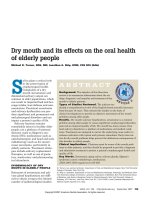
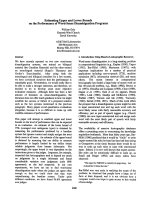
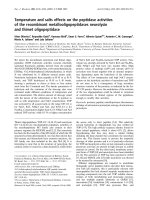
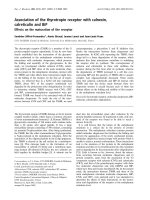
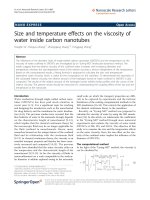


![thang nguyen ngoc - 2011 - corporate governance and its impact on the performance of firms in emerging countries - the evidence from vietnam [cg]](https://media.store123doc.com/images/document/2015_01/02/medium_rfd1420194809.jpg)